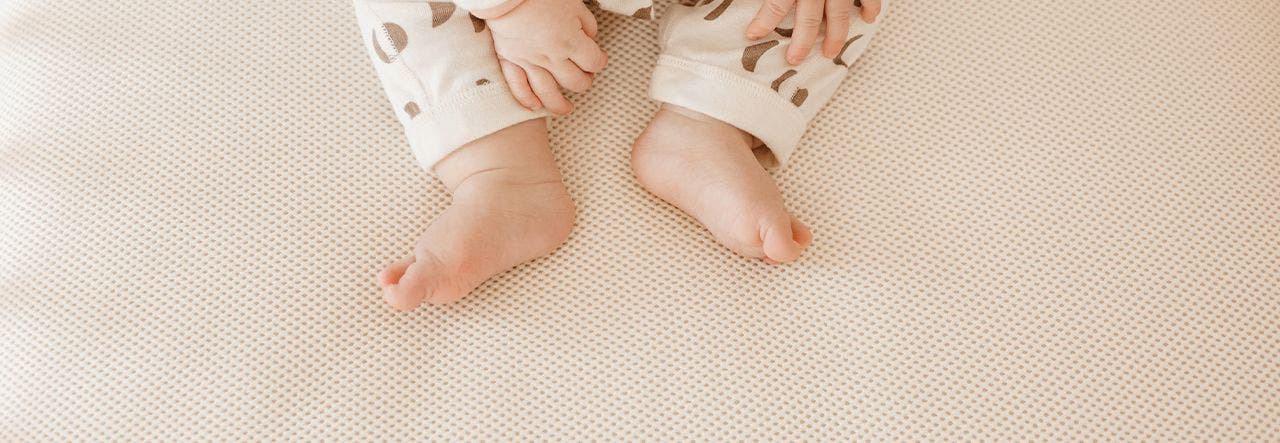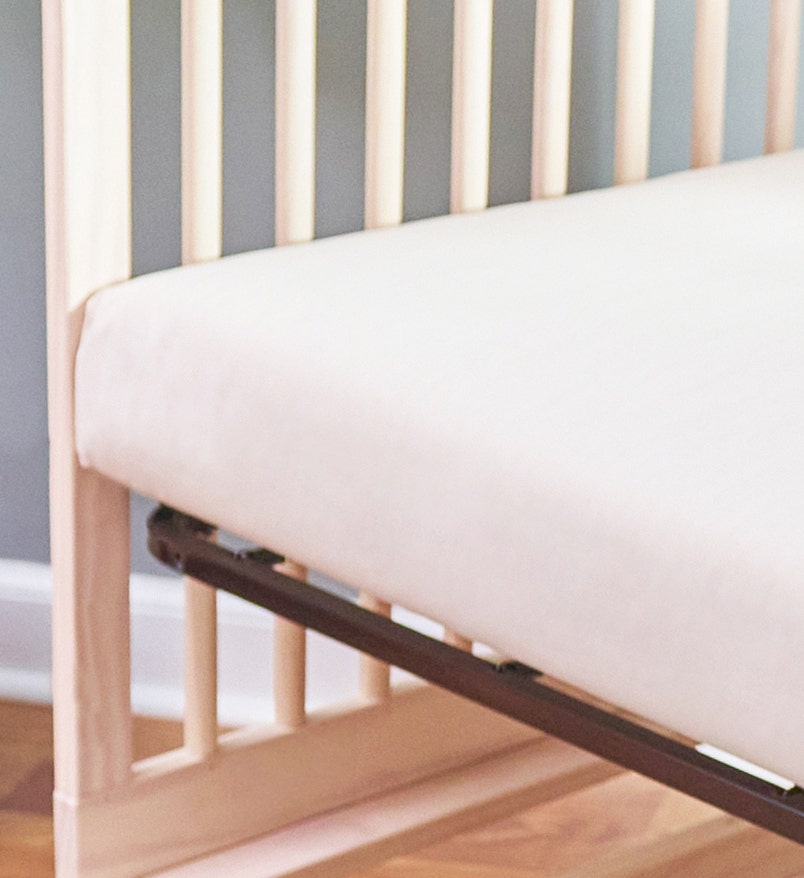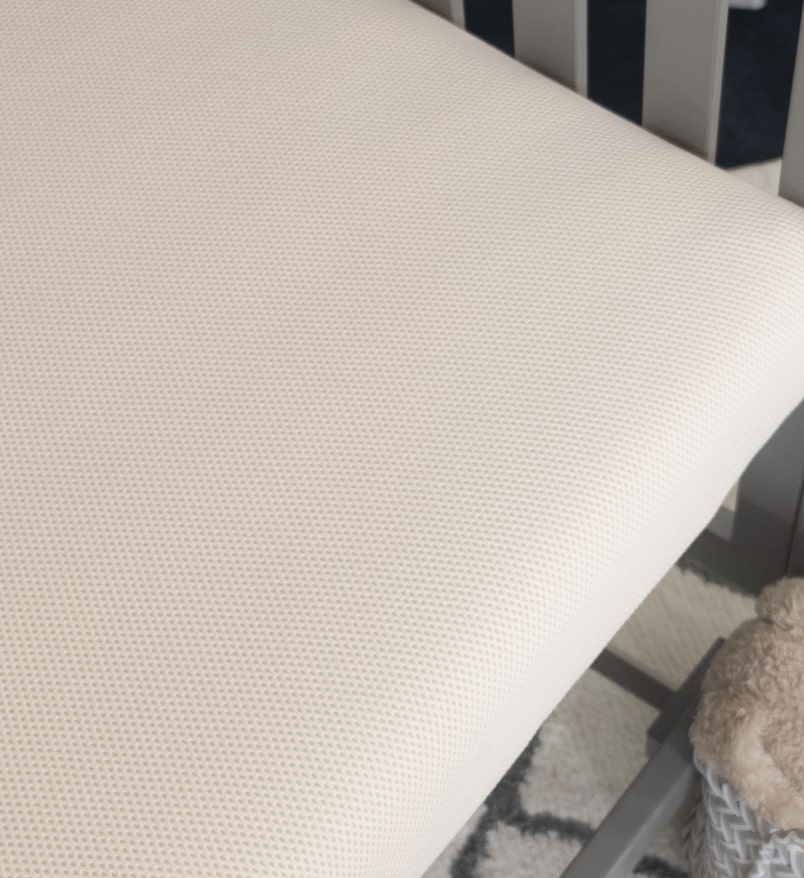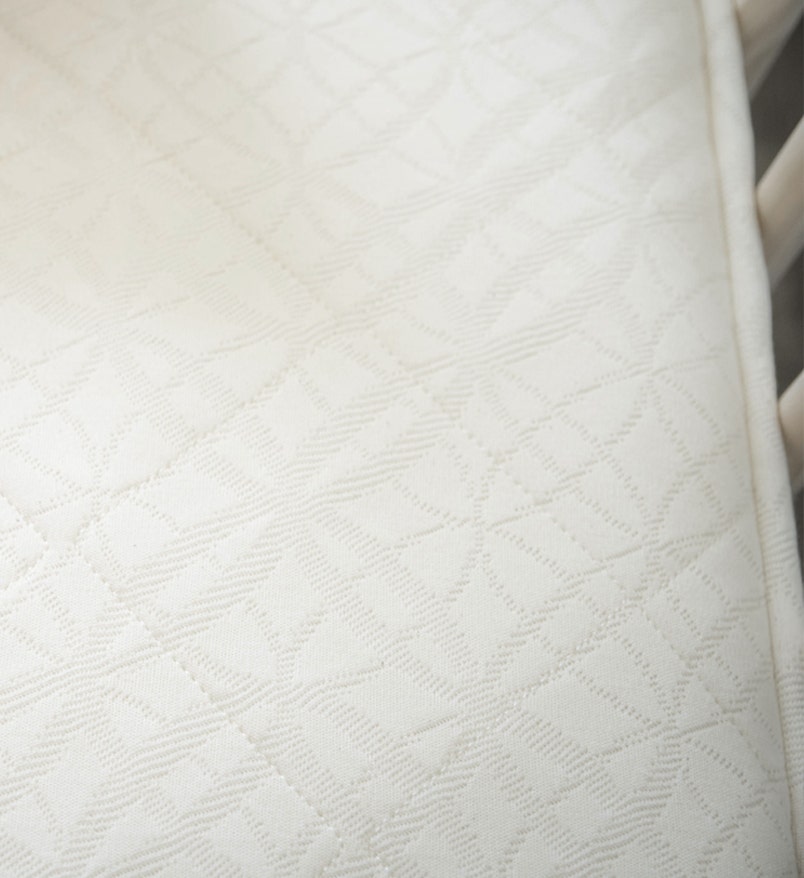When it comes to your baby’s sleep, safety and comfort are paramount. Choosing the right crib mattress plays a significant role in ensuring both. In recent years, breathable crib mattresses have gained popularity for their potential to enhance airflow and reduce overheating. But what is a breathable crib mattress, and why should you consider one? Let’s dive into the details.
What Is a Breathable Crib Mattress?
A breathable crib mattress is designed to allow air to flow through its surface, potentially reducing the risks of suffocation and overheating. Unlike traditional crib mattresses, which can trap heat and restrict airflow, breathable options use specialized materials and construction to create a safer, comfier sleep environment for your baby.
These mattresses typically feature a breathable cover or core made from materials like organic cotton or mesh fabrics. This design ensures that even if your baby ends up face-down during sleep, they can still breathe more easily compared to a non-breathable surface. It also helps your baby better regulate their body temperature for an overall comfier sleep.
Are All Crib Mattresses Breathable?


The short answer is no. While many crib mattresses claim to offer some level of breathability, not all are created equal. Some mattresses focus solely on comfort or waterproofing, without incorporating breathable technology. This is why it’s essential to understand the key features to look for when shopping for a breathable crib mattress:
- Airflow Testing: Check if the mattress has been tested for airflow and certified by independent organizations.
- Materials: Look for organic and chemically-safer materials that promote breathability without compromising on safety.
- Design: Opt for a mattress with a removable and washable breathable cover, so that you aren't sacrificing hygiene of breathability (because both are important when it comes to Baby's safety).
Are Breathable Crib Mattresses Safer?
Breathable crib mattresses are often considered safer due to their potential to reduce overheating and suffocation risks. By allowing air to flow freely, these mattresses create a sleep environment that supports your baby’s well-being. However, breathability alone is not enough to ensure safety. A breathable crib mattress must also address hygiene, allergies and toxins – because a breathable crib mattress naturally begs the question, "What is in the air my baby is breathing in?"
A hygienic breathable crib mattress will be waterproof and easy to clean. Without waterproofing, a breathable mattress may absorb spills, leading to mold and bacterial growth, which can be harmful for your baby's sensitive lungs.
A breathable mattress should also address materials safety. Organic certification ensures that your baby's crib mattress is made without materials deemed harmful by the Globabl Organic Textile Standard (GOTS), the gold standard for organic consumer products.
You should also look for a breathable crib mattress that avoids common allergens like latex, wool and coir, because when your baby is new to the world, you won't yet know everything that they may be allergic to. Their crib mattress, where they spend up to 16 hours a day sleeping, breathing and growing, is not the place to test for allergies!
In summary, to truly be safer, a breathable crib mattress should also be waterproof, certified organic and allergy-friendly. Naturepedic’s design is unique in that it checks all these safety and health-focused boxes, giving parents added confidence in their choice.
Naturepedic's Breathable Crib Mattress Design
Naturepedic's innovative design combines safety, comfort and practicality. The breathable cover features a 3D lattice structure that allows for 360-degree airflow, ensuring optimal ventilation for your baby. Beneath this layer is a fully waterproof crib mattress that protects against spills and accidents.
The entire mattress is GOTS certified organic and crafted from allergy-friendly materials. By addressing breathability, waterproofing and materials safety in one comprehensive design, Naturepedic ensures that babies sleep safer – so parents can sleep better, too.


Can a Crib Mattress Be Breathable AND Waterproof?
Breathable and waterproof seem to be counter to each other, don't they? If air can get through, so can urine, drool, spit up, spilled milk, etc., which can lead to microbial growth ... right?
Often, yes. But it doesn't have to be that way.
Naturepedic engineered a simple and practical solution. Instead of making the whole crib mattress porous, we developed a breathable layer that is porous at the surface, allowing air to flow freely, and is removable and machine washable, too. Under the breathable cover, the crib mattress is waterproof (using our safer, GOTS-approved waterproofing made from non-GMO sugarcane instead of toxic waterproofing materials like phthalates and vinyl/PVC).
Accidents are unavoidable when you have a baby in the household. But with our design, you can just throw the breathable cover in the washing machine, wipe the mattress surface clean, add on a spare breathable cover and put your baby right back to bed. (Or you can go cover-free! Because we use naturally breathable organic cotton as our primary material, our crib mattress passes the same breathability tests as other options on the market even without the cover.)
Is the "Layer" Approach Just as Breathable?
Yes. Breathable baby mattresses have become so popular that leading industry testing labs have developed a “suffocation test,” in which mattresses are graded on how breathable they are. The test uses a simulated baby positioned face down, and air is blown in and out of its mouth to simulate breathing. The suffocation test was performed on the Naturepedic breathable crib mattress models and compared to other designs. The results show that:
- The Naturepedic breathable layer scores in the lowest suffocation risk category (i.e., best).
- There is no additional breathability benefit to making the entire mattress breathable versus using a breathable layer.
- The simulated baby is able to breathe face down through the Naturepedic breathable layer indefinitely.
With no additional benefit to making the mattress completely porous, there is no reason to risk unnecessary hygienic issues and make cleaning more difficult (because isn't parenting hard enough as it is?).
Your Checklist for Choosing a Better Breathable Crib Mattress


We've covered a lot of ground! To sum it all up, we've put together a checklist for what you should look for when choosing a breathable crib mattress:
- Certified Organic: Look for a GOTS-certified organic mattress to ensure it avoids harmful chemicals.
- Waterproof: A waterproof layer protects against spills and accidents while maintaining hygiene.
- Allergy-Friendly: Opt for mattresses that avoid materials like latex, wool or coir, which can trigger undiscovered allergies.
- Independently Tested: Ensure the mattress has passed rigorous airflow and suffocation risk evaluations.
- Convenient: A removable, machine-washable breathable cover simplifies maintenance for parents' sake.
- Kind: Sustainable business practices and vegan materials are kinder for Baby and Mother Nature alike – because one day, our world will be their world!
By following these guidelines, you can confidently select a mattress that provides the safety and comfort your baby needs. Want more crib mattress shopping tips? Here are seven crib mattress safety questions – answered!
 BABY
BABY  KIDS
KIDS  ADULT
ADULT  LEARN
LEARN  STORES
STORES 


